The 3rd Annual Middle East Variable Refrigerant Flow Conference, held on March 30 and 31 at the Habtoor Grand Beach Resort, Dubai, served as a platform for end-users, consultants and manufacturers to discuss issues plaguing the VRF industry. Lack of operational data for VRF systems and a call for the harmonisation of regulations were the two topics that secured major time and attention amongst the stakeholders. We bring you the first part of the report.
By Rajiv Pillai | Features Writer
The variable refrigerant flow (VRF) market is worth approximately USD 10 billion, globally. In the Middle East, several consultants and building owners are turning towards VRF technology, keeping in mind the flexibility it offers, energy efficiency and compact footprint, among other reported attributes. Simultaneously, the general belief amongst end-users and consultants is that the industry could have a much larger share of the market in the region, provided there is greater clarity on issues related to piping length, fresh air and performance, backed by independently reviewed operational data.
The 3rd Annual Middle East Variable Refrigerant Flow Conference, produced by CPI Industry, publishers of Climate Control Middle East magazine, held on March 30 and 31, at the Habtoor Grand Beach Resort, Dubai, took over these issues by engaging the various stakeholders in discussions and presentations. Operational data was one of the themes of last year’s VRF conference. In the build-up to this year’s edition of the conference, Climate Control Middle East sent across questionnaires to various manufacturers to elicit answers on operational data, and was able to produce those responses to the audience at the conference.
One of the key highlights of the conference was the presentation of real-time operational data by one of the manufacturers, which was a first-of-its-kind initiative for the region. The presentation of real-time data, on Day 2, was prompted by an interesting discussion involving consultants, during which one of the participants, George Berbari, the CEO of DC PRO Engineering, castigated the VRF industry for not doing enough to build confidence towards the technology, particularly a reluctance to present field validation data. More on that later, though.
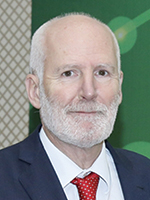
Erick Melquiond
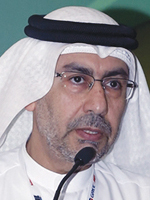
Faisal Ali Hassan Rashid
The proceedings of Day 1, moderated by Erick Melquiond , the President of EuroventCertita Certification, revolved around the different set of regulations existing in the region, and on how they might help encourage energy efficiency. Faisal Ali Hassan Rashid, Director, Demand Side Management, Dubai Supreme Council of Energy (DSCE), kick-started the proceedings, when he spoke about energy efficiency in air conditioning systems and the role played by Demand Side Management (DSM). “As the population grows, energy consumption will also increase and 70% of energy will go into cooling,” Rashid said. To address this, the DSCE has come up with eight DSM programmes, which basically focus on energy efficiency and reduction in demand, he said. “DSM strategy is in focus of the Supreme Council of Energy,” Rashid said. “HVAC is addressed through three separate programmes: building retrofits, District Cooling and standards and labels for appliances and equipment.”
When asked on what he thought of VRFs as one of the possible energy-efficient cooling approaches, Rashid subtly responded by saying, “We look at best practices all over the world, and opinions are encouraged from various entities.”
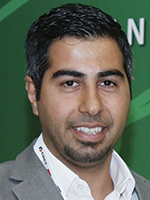
Hassan Younes
Rashid’s presentation was followed by a discussion on low-GWP refrigerants for high-ambient conditions, which was co-presented by Hassan Younes, Vice Chair, ASHRAE Falcon Chapter, Grassroots Government Affairs and Chapter Technology Transfer Committee, and Farah Al Zarooni, Head of Accreditation, Emirates Authority for Standardization and Metrology (ESMA). Zarooni stated that ESMA had mentored discussions on the use of low-GWP refrigerants and was constantly trying to make progress on the issue. Speaking about the industry-specific 4th Refrigerants Symposium, held in October 2014 in Dubai, Younes said that the discussions at the symposium revolved mostly around the use of low GWP refrigerants and about handling those refrigerants in a safe manner by taking into account all the possible risks involved.

Sarfraz Dairkee
Sarfraz H Dairkee, Secretary of the Board, Emirates Green Building Council (EGBC), then made a presentation on how the EGBC was working on a technical guideline for retrofitting existing buildings. The guideline’s main chapters, Dairkee said, would comprise sub-sections, which he added, would provide readers a choice of specific processes they could implement to improve their building’s performance, save money, and prevent further pollution of the environment. The release of the guideline, Dairkee said, was in the second quarter of the year.
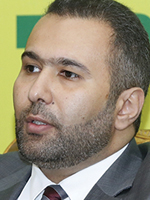
Tarek Alsitt

Esam Elsarrag
Dairkee, quoting a report by the Pacific Northwest National Laboratory, said that the VRF technology was well-suited to retrofit applications in older buildings and that it could replace existing equipment in limited space conditions. He cautioned, however, that manufacturers of VRFs systems needed to address some concerns, such as the technology being a proprietary system and as having a high refrigerant charge.
Next up, the discussion focused on the advantages and challenges of having a set of regional standards and how different regulatory and assessment authorities were working towards achieving a harmonised approach. Tarek Alsitt, Standards Specialist, GCC Standardization Organization (GSO), spoke about GSO Standards and their impacts on VRF systems. He said that the GSO Standards dealt with safety requirements, testing methods and rating for performance requirements for air-conditioner appliances. Revealing the lack of a specific common standard for VRF systems, Alsitt said that the GSO was ready to take recommendations from VRF manufacturers towards establishing a regime.
This point was further taken up by Dr Esam Elsarrag, the Director of the Doha, Qatar-headquartered Gulf Organisation for Research & Development (GORD-GSAS). He said that GORD’s objective wasto create a sustainable built environment that minimised ecological impact through the development of a sustainability rating system supported by a set of performance-based standards that addressed the specific regional needs. He said: “GSAS is the only performance-based system in MENA. We talk about building performance. We develop benchmarks. And once we develop benchmarks, the manufacturers will develop the right tools; this will help them. We look at issues from the macro level to the micro level.” Elsarrag went on to claim that GORD’s benchmark was 70% better than the ASHRAE standard.
The highlight of Elsarrag’s presentation – and perhaps the entire conference – was an announcement he made about how Qatar was launching twin initiatives to encourage VRF manufacturers to showcase their technology. He said that the country had created two projects – the 800-square-metre Eco Villa in Lusail City, which was a real-to-scale local villa and the Innovative Technohub at the Qatar Science and Technology Park. He welcomed VRF manufacturers to showcase their systems at the two projects. “If you contribute [through sharing your technology],” Elsarrag said, “you must be willing to be open when it comes to sharing data. If you are willing to be open, you are welcome.”
His speech was followed by a panel discussion, in which Alsitt and he participated and held court on the issue of harmonisation of regulations and unification of certification processes. They discussed that there was a need for interaction among GCC countries for developing the regulations, and for having proper follow-ups and arriving at a consensus on how to implement them.
As if a logical sequence, Veerle Beelaerts (see side-bar, titled Voices), the Environment and Compliance Specialist at Daikin, in a subsequent presentation, said that the VRF technology was fully recognised in the GCC and was represented in legislations as a separate product category. She went on to add that VRF was optimised for seasonal efficiency, while delivering high comfort levels, thanks to the innate ability of the technology to adjust the refrigerant volume and the refrigerant temperature. Local legislations were in place to reduce the energy consumption, she said, adding that those were based on nominal efficiency, though. Seasonal efficiency would reduce energy consumption throughout the whole year, but there was no formula for high-ambient conditions in the region. The existing formulae for moderate climatic conditions could be adapted to high-ambient temperature conditions, though, Beelaerts said. “Currently, there is no formula for high-ambient conditions, then how can you put in a legislation?” she asked.
The response to her question was unanimous, “There is a need to create a formula, and all the members of the GCC must come to terms with this, otherwise there will be different legislations.”
Besides Beelaerts, Zakir Ahmed, the Managing Director of NIA Limited (suppliers of Gree VRF systems in the region), spoke on behalf of the VRF manufacturing community on Day 1. Ahmed, making an Industry Leadership Address, spoke about the efficacy of solar photovoltaic-powered VRF systems and the implications of the innovative technology for the region (see side-bar, titled Solar-centric innovation).
The fag end of Day 1 saw two back-to-back panel discussions, the first involving end-users and the second involving consultants. The first discussion, chaired by Dairkee, had Raied Al-Bitar, Manager (Mechanical), Meraas Holding; Amgad Abadir, Manager (Mechanical), Aldar Properties and Khalid Rabbani, Chief Engineer-Rail Projects, Planning & Development Department, Roads and Transport Authority as the panellists. They elicited concerns ranging from a lack of awareness about the technology, how to quantify (operational data) and the possibility of refrigerant leaks.
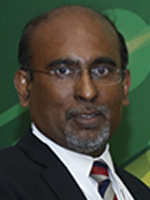
Kandasamy Anbalagan
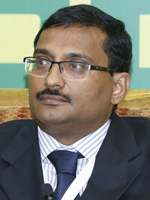
Gella Bharat
The second panel discussion involved Kandasamy Anbalagan, Managing Partner, Proleed Engineering Consultants; Berbari; Gella Bharat, Discipline Specialist (HVAC), Tebodin & Partners; Shaher Rajha, Senior Mechanical Engineer, AECOM and Hassan Younes, Technical Director, Griffin Consultants.
Berbari stirred things up by stating that he was not happy with the performance of VRF systems from an energy efficiency perspective. He revealed that he had come armed with data that he had measured himself, which showed VRF systems as being low on energy efficiency. “What claimed to have an EER of 20 was actually 8.5 when measured,” he said. He boldly went on to predict that by 2020, VRFs would be phased out completely and would be replaced by variable water flow systems.”
He said the only way for manufacturers of VRF systems to convince him and his fellow consultants was to present them with field data. “Manufacturers must come out with some operational data,” he said. “The data must be provided to end-users and consultants. There should be consistency in manufacturer’s claims. And if you can measure it, then do it accurately. If you have measured it, then report it.”
The panel discussion involving the consultants set the tone for Day 2, with one of the manufacturers, Toshiba, represented by AHI Carrier, coming back with real-time operational data, as demanded by the consultants. The representative from the company presented the data during a panel discussion involving different manufacturers, at the end of Day 2.
The Day began with a presentation on operational data by B Surendar, the Editor of Climate Control Middle East. The presentation, as mentioned earlier, comprised the results of a survey of different manufacturers on different aspects of operational data; the survey was conducted a week prior to the conference. Surendar summarised his presentation by saying that for a larger part, the responses to the questionnaire were generic and inconclusive. AHI Carrier, informally representing all the manufacturers, as mentioned earlier, partially redeemed the situation by presenting the real-time operational data.
(To be continued in the May 2015 issue)
Solar-centric innovation
Zakir Ahmed, the Managing Director of NIA Limited (Gree), gave an Industry Leadership Address on the topic, “Advent of the solar-powered system: The efficacy of a solar photovoltaic-powered VRF system and the implications for the region, including zero power consumption from the grid”. Later, he spoke to Climate Control Middle East on the side-lines of the conference. Excerpts…
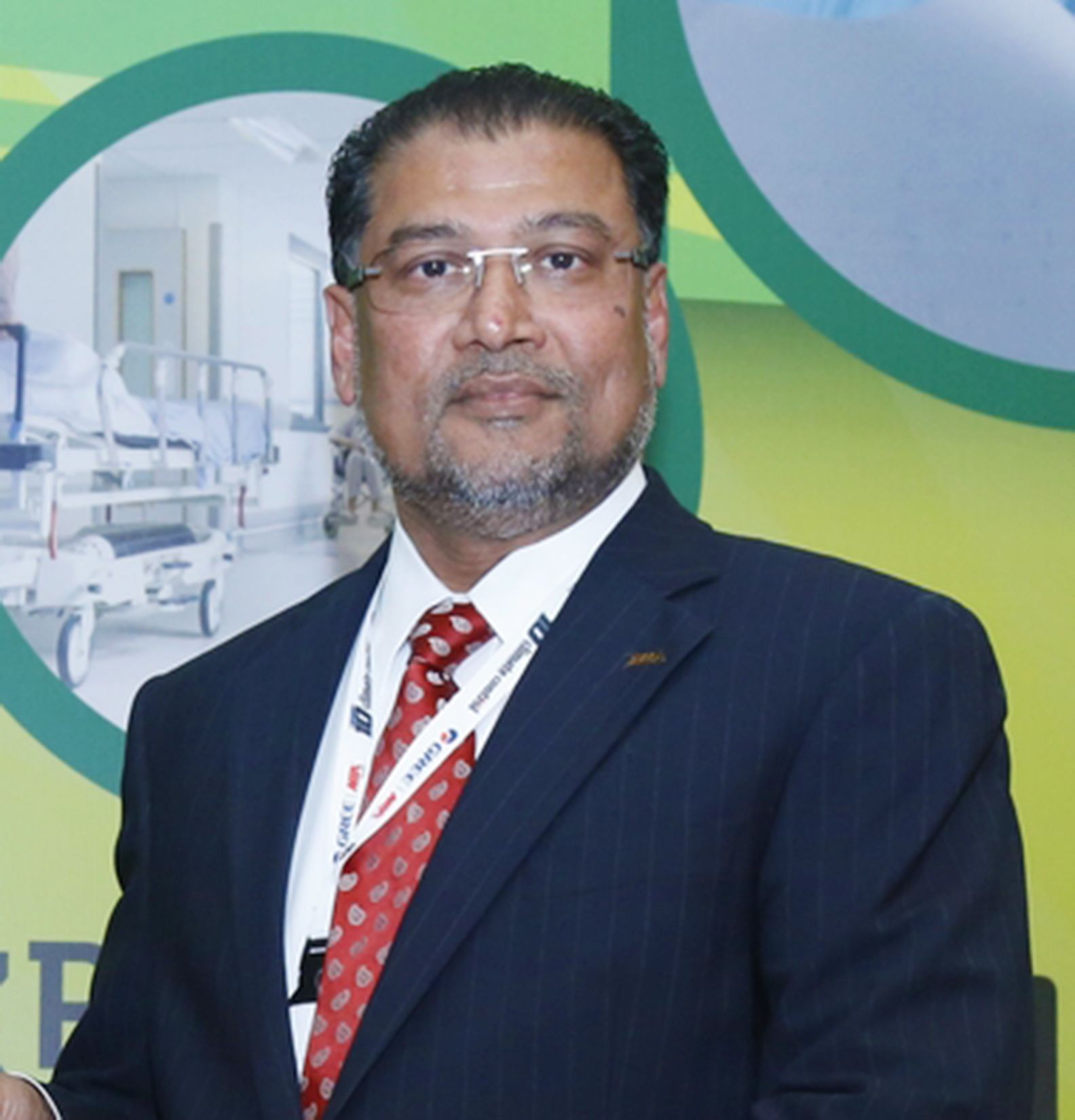
Zakir Ahmed
Could you elaborate on the solar-powered VRF system?
We have just launched the solar-powered VRF systems, and the reason why we have put this launch forward is because of the VRF Conference. Furthermore, new initiatives like the Shams Dubai coming on board, this is actually the first step forward. Perhaps talking about this much before may have been too premature.
Could you comment on the market awareness on VRF systems? Why are they not yet popular in the Middle East context in relation to other parts of the world?
This is the sad part of it. And throughout the conference, we have seen that happen. VRF is a new-generation alternative to the fixed based system this country was using, and it came late to this market. It started off in Japan about 20 years ago. It went to Europe. It came to neighbouring markets, such as Turkey and Iran, 10 years ago. It took time to come to the Gulf countries, because the inverter systems that were used in the VRFs could not handle the high-ambient conditions. That was the technology then, but they have improved the protection for the inverter systems, which can now withstand high-ambient temperatures of 52 degree C. That was the first limitation from the supplier and had nothing to do with the industry. When the equipment came to the market, the issue that came to the fore was of VRF manufacturers not giving technical support. In such an atmosphere, it is obvious that the consultant will always be in doubt. So that’s the challenge that the industry has had, such as operational data not being available and installation procedures not being correct. So fear is instilled in the people that if the installation is improper, the building can give a problem. These are pertinent points. The intensity with which these are exaggerated has put fear into the minds of the consultants. So this conference is meant to educate and dissipate that fear.
VRF is about three factors: the first is energy conservation – 30% is the norm that is expected from the industry. The second is about better quality comfort – a normal air conditioner would swing in the temperature range by two degrees C, and for VRFs it’s supposed to be half a degree C. It gives you this variation in temperature in the room. And the third is the ability to control the functioning of the air conditioning unit based on real demand. If you, for example, have a rooftop package unit, for a single household, even though you are using just one zone such as a living room, the equipment will be cooling the whole house. That’s the worst example.
The best example is that with VRFs, for every room you can have a single control and, thereby, you can reduce your energy or rather rationalise your energy based on actual use, rather than forced switching on and off of the machine.
The last two parts may not have anything to do with government bodies, but conservation does. If Dubai has the plan 2021 to cut down consumption by 30%, initiatives like this from the industry will help the government meet the standards. Recognition of the problem is 50% of the solution. The government has to recognise the kind of equipment that has been going into the building pipe design for the lack of choice, and this equipment is guzzling too much energy unnecessarily. It’s a waste of energy. VRF is a product that has been precisely developed to cut the wastage and also conserve energy. The government cannot come and tell the end-user that you have to stop using this air conditioner and start using VRFs, though. They could use chiller systems, but what the government can say is that for every square metre of indoor space, you will rationalise the energy supply to only so much and when the government does such a thing, automatically the customer goes around seeking efficient solutions. VRF is one of them.
VOICES
I think the most important thing now is that there are different legislations everywhere, so I would hope that they would work together to come to one legislation for the whole region or at least implement the GSO legislations that are there. Otherwise, it’s very difficult to comply. Also, if the legislations are there and the standards are there, there are no clear rules on how to comply about the testing or how the inspection will be done. These rules change a lot. And this is very difficult for the manufacturers, because they want to comply, but sometimes it’s just not possible, or you have to change something at the last moment, which is expensive, of course.

Veerle Beelaerts
– Dr Veerle Beelaerts, Environment and Compliance Specialist, Daikin Middle East
We have projects in the size of 18,000 TR – a single project of 18,000 TR for VRF has never been found or never been sold, as far as my knowledge is concerned, in any part of the globe. The fact that we get to see these projects today means we don’t have to wait that long. The point to see is that the intensity of the project and the number of such projects is going to increase by the day. I will not say VRFs are not popular any more. The technology is very popular.

Syed Jafar Imam
– Syed Jafar Imam, Senior Regional Manager – RLC (Middle East and Africa), AHI Carrier
VRF systems are going to be one of the players of the market competing against the chillers and standalone systems, owing to energy efficiency. I had done designs with VRF systems possibly nine years back, where we had installed five or six units combined with an outdoor unit, owing to lack of space. It was a retrofit job, and it is running successfully. It was one of the earlier jobs I had executed, and we were open to the technology. However, I observe a lack of knowledge among the manufacturers. We do get contradicting information at times.
– Kandasamy Anbalagan, Managing Partner, Proleed Engineering Consultants
As a consultant, we need to know the performance of the equipment at 50 degree C, because that is how we rate the equipment from different manufacturers. What we found from our previous experience is that some of the manufacturers don’t even guarantee that their equipment will run at 50 degree C; they don’t want to give it in writing. We basically are in a desert climate, where the temperatures go as high as 50 or 52 degree C, and so at that temperature, we should be able to meet the indoor comfort conditions. If the outdoor condensing unit is not sized properly to take care of that load, then it will be a problem.
– Gella Bharat, Discipline Specialist (HVAC), Tebodin & Partners
Copyright © 2006-2025 - CPI Industry. All rights reserved.